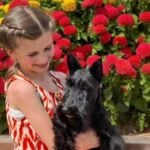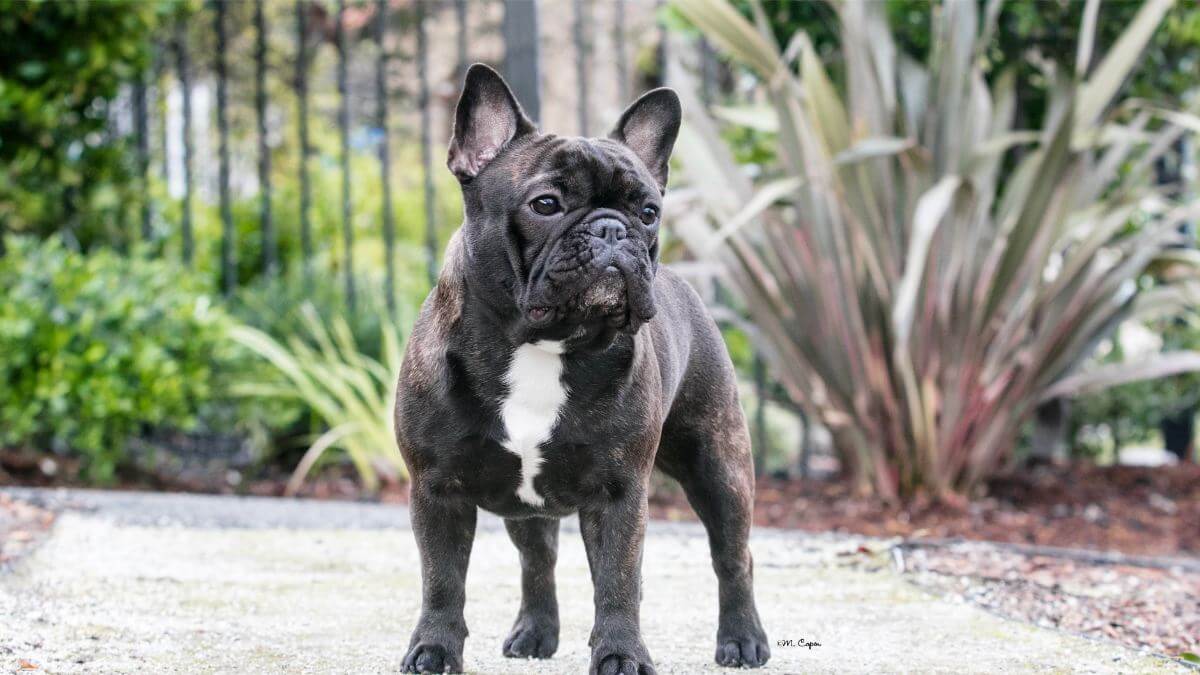
Home » Judging the French Bulldog

This article was originally published in Showsight Magazine, March 2014 issue.
“The whole is greater than the sum of its parts” – Aristotle
When judging the French Bulldog, the most important function we expect from judges is to adhere to the official FBDCA Breed Standard.
The standard was written and accepted by the AKC in 1897 by the French Bull Dog Club of America, the first organization in the world devoted to the breed.
Let us take a look at the standard as it relates to the various “parts” of the French Bulldog. When judging the whole French Bulldog, FBDCA stresses the importance of judging the merits of a dog and not its faults.
The French Bulldog has an active, intelligent appearance. It is a muscular dog of heavy bone, smooth coat, compactly built, and of medium or small structure.
Expression is alert, curious, and interested. Any alteration other than the removal of dewclaws is considered to be a mutilation and is a disqualification.
All points are well distributed and bear good relation to one another. No feature should be so prominent from either excess or lack of quality that the animal appears poorly proportioned.
Weight not to exceed 28 pounds; over 28 pounds is a disqualification. (If weight is a concern, call for scales. No judge should lift dogs off of the table as an indicator of weight.) Proportion—Distance from withers to ground in good relation to the distance from withers to onset of tail, so that the animal appears compact, well balanced and in good proportion. Substance—Muscular, heavy bone.
Head large and square. Eyes dark in color, wide apart, set low down in the skull, as far from the ears as possible, round in form, of moderate size, neither sunken nor bulging. In the lighter colored dogs, lighter colored eyes are acceptable. No haw and no white of the eye should be showing when looking forward. Ears known as the bat ear, broad at the base, elongated, with round top, set high on the head but not too close together, and carried erect with the orifice to the front. Te leather of the ear is fine and soft. Other than bat ears is a disqualification. Te top of the skull is flat between the ears; the forehead is not flat but slightly rounded. Te muzzle broad, deep and well laid back; the muscles of the cheeks well developed. Te stop well defined, causing a hollow groove between the eyes with heavy wrinkles
forming a soft roll over the extremely short nose; nostrils broad with a well-defined line between them. Nose black. Nose other than black is a disqualification except in the case of the lighter colored dogs, where a lighter colored nose is acceptable but not desirable. Flews black, thick, broad, hanging over the lower jaw at the sides, meeting the underlip in front and covering the teeth, which are not seen when the mouth is closed. Te underjaw is deep, square, broad, undershot and well turned up.
Te neck is thick and well arched with loose skin at the throat. Te back is a roach back with a slight fall close behind the shoulders; strong and short, broad at the shoulders and narrowing at the loins. Te body is short and well rounded. Te chest is broad, deep, and full; well ribbed with the belly tucked up. Te tail is either straight or screwed (but not curly), short, hung low, thick root and fine tip; carried low in repose.
Forelegs are short, stout, are straight, muscular and wet wide apart. Dewclaws may be removed. Feet are moderate in size, compact, and firmly set. Toes compact, well split up, with high knuckles and short stubby nails.
Hind legs are strong and muscular, longer than the forelegs, so as to elevate the loins above the shoulders. Hocks well let down. Feet are moderate in size, compact and firmly set. Toes compact, well split up, with high knuckles and short stubby nails; hind feet slightly longer than forefeet.
Coat is moderately fine, brilliant, short and smooth. Skin is soft and loose, especially at the head and shoulders, forming wrinkles.
Acceptable colors—All brindle, fawn, white, brindle and white, and any color except those which constitute disquali-fication. All colors are acceptable with the exception of solid black, mouse, liver, black and tan, black and white, and white with black which are disqualifications. Black means black without a trace of brindle.
Correct gait is double tracking with reach and drive; the action is unrestrained, free, and vigorous.
Well behaved, adaptable, and comfortable companions with an affectionate nature and even disposition; generally active, alert, and playful, but not unduly boisterous.